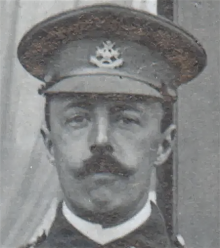
Charles Harold Heathcote was born in Sale, Cheshire, England on 22 February 1876. He was articled to his father, Charles Henry Heathcote (1850-1938) in Manchester and remained with him as an improver and as his assistant.
He commenced practice as an architect in c.1900 and was a partner, with his father and his brothers, Ernest Grigg Heathcote (1877-1947), and Edgar Horace Heathcote (1882-1929), in the architectural practice Charles Heathcote & Sons. The practice was initially based in Manchester, England, but had relocated to London by 1910.
With the outbreak of World War One in 1914 Charles Harold Heathcote left the practice and joined the Army. He rose to the rank of major, a title he used long after he had left the Army. [For details of his role in the suppression of the Easter Rising in Dublin in 1916 see Architects of Greater Manchester 1800-1940].
Following the war he established his own independent practice in London.
Charles Harold Heathcote was a Member of the Society of Architects (MSA) and was elected a Licentiate of the Royal Institute of British Architects (LRIBA) in 1925. His address was given as 64 Cross Street, Manchester, 110 Cannon Street, London, and Blackbrook, Wilmslow, Cheshire in 1910; 82 Victoria Street, Westminster, London in 1914; 18 Clarendon Road, London in 1923 and 1926; Wakerley House, Wakerley, near Stamford, Lincolnshire in 1930; and 27 Bramhall Lane South Bramhall, Cheshire in 1936 and 1939. He died in Luton, Bedfordshire in 1960
Directory of British Architects 1834-1914. Compiled by Antonia Brodie, et al. Volume 1: A-K. London; New York: British Architectural Library, Royal Institute of British Architects/Continuum, 2001